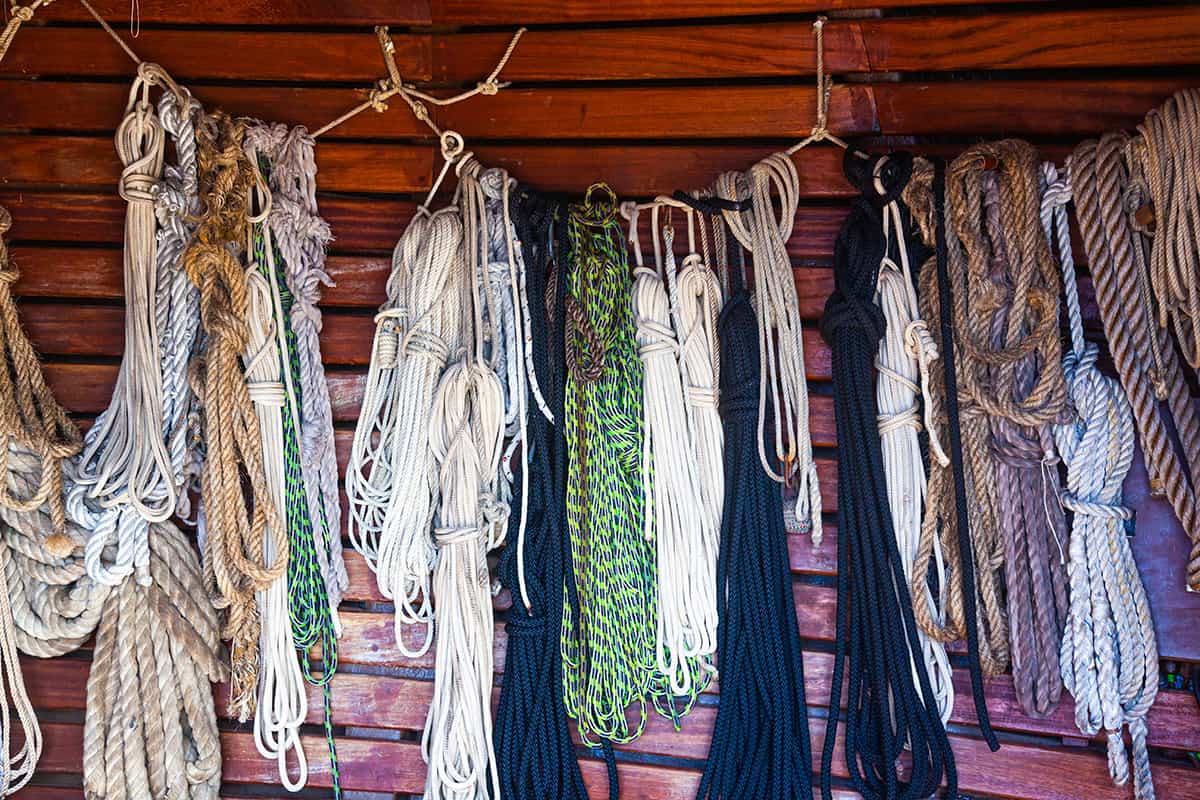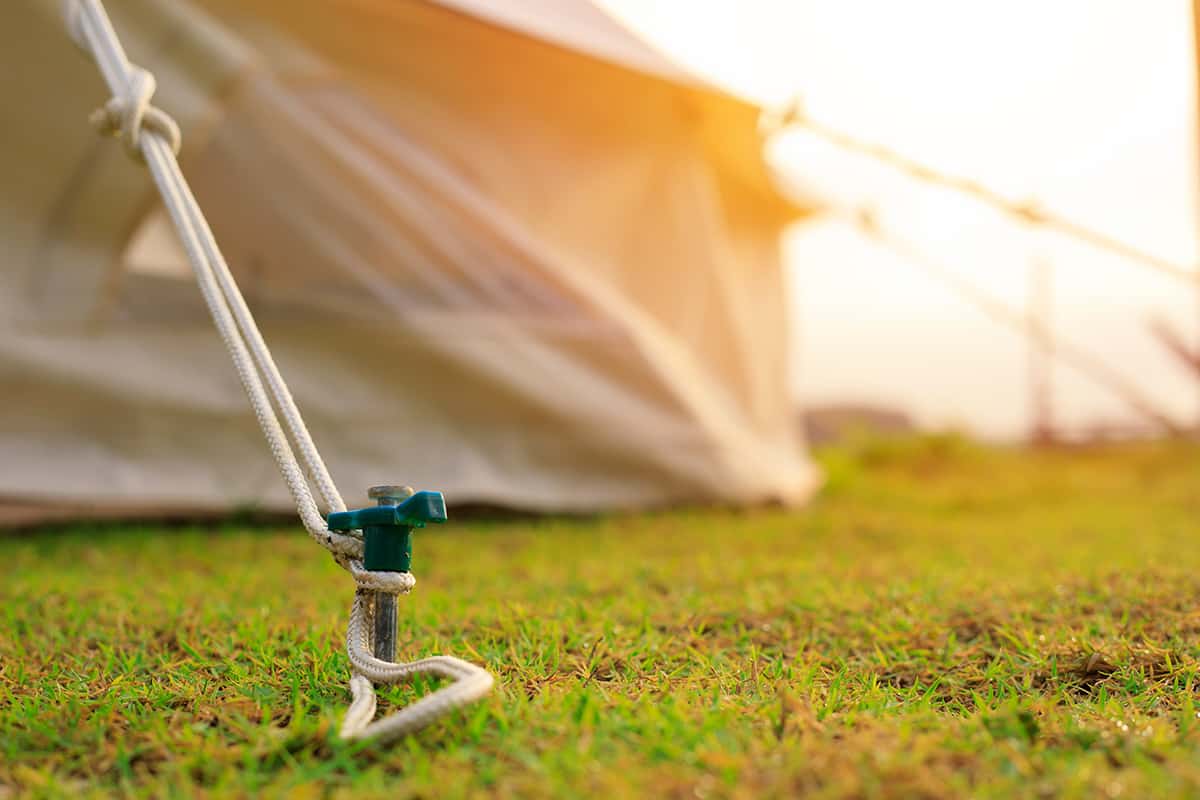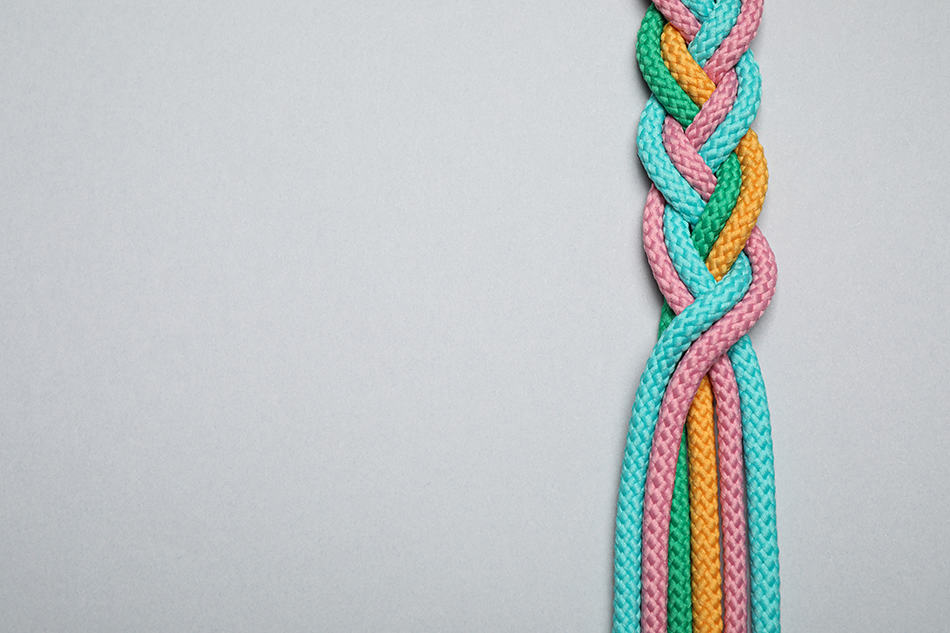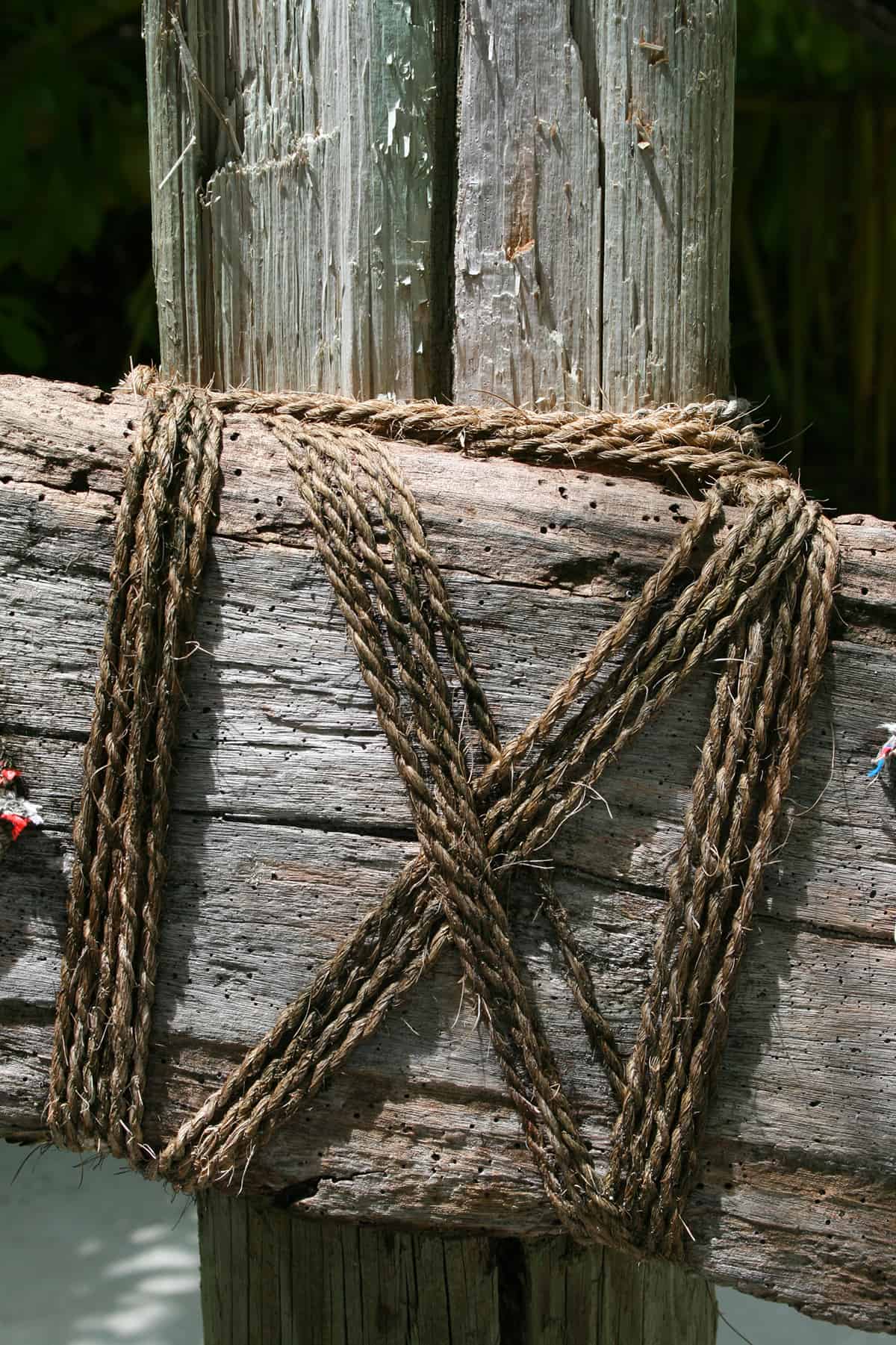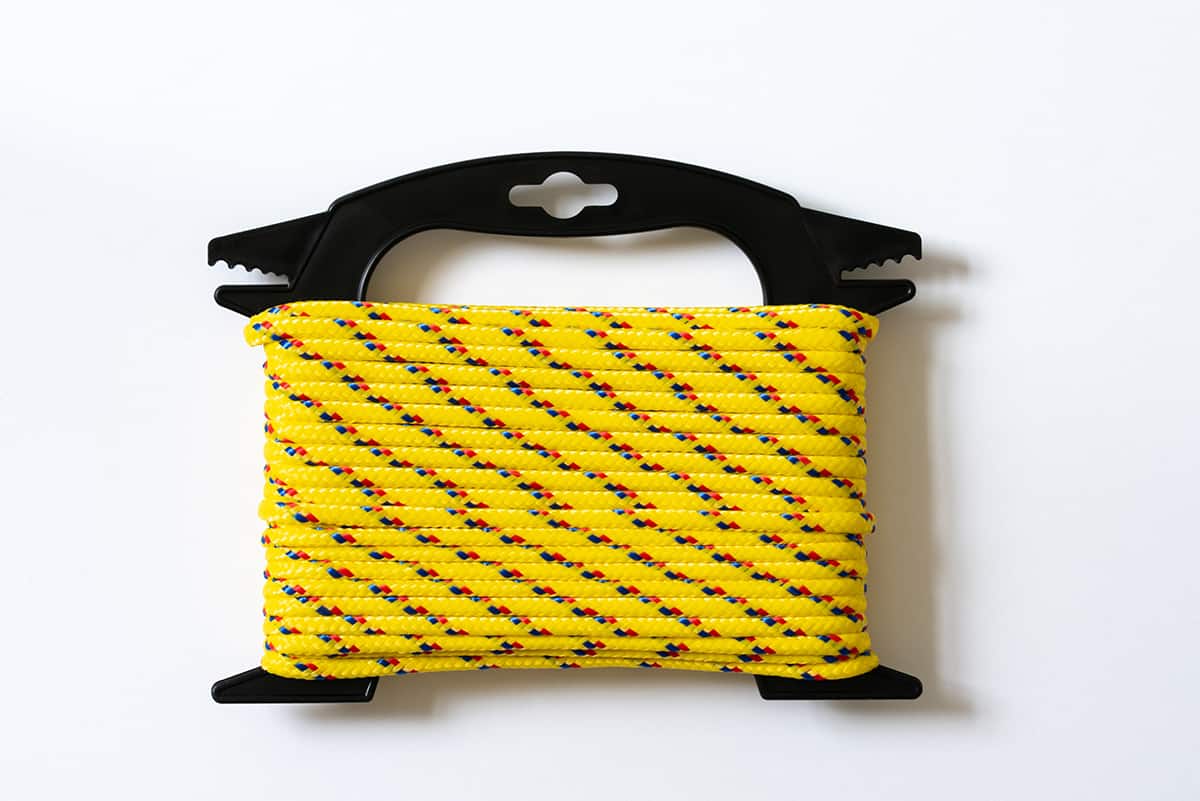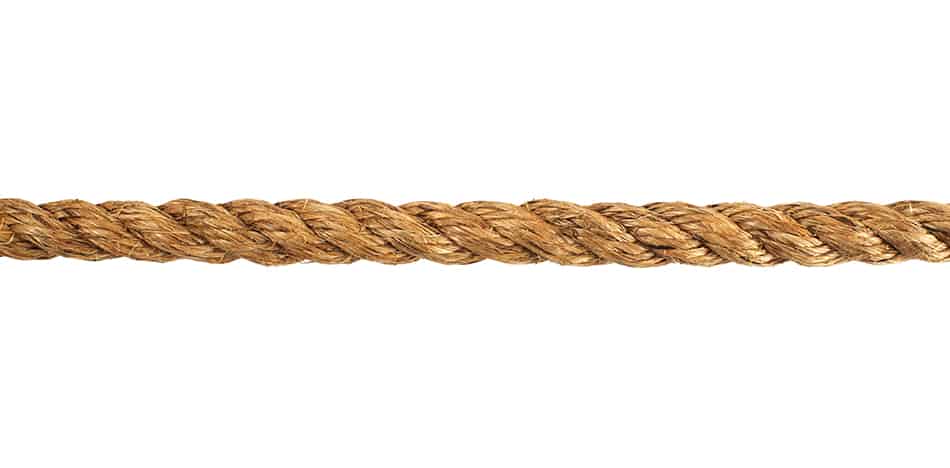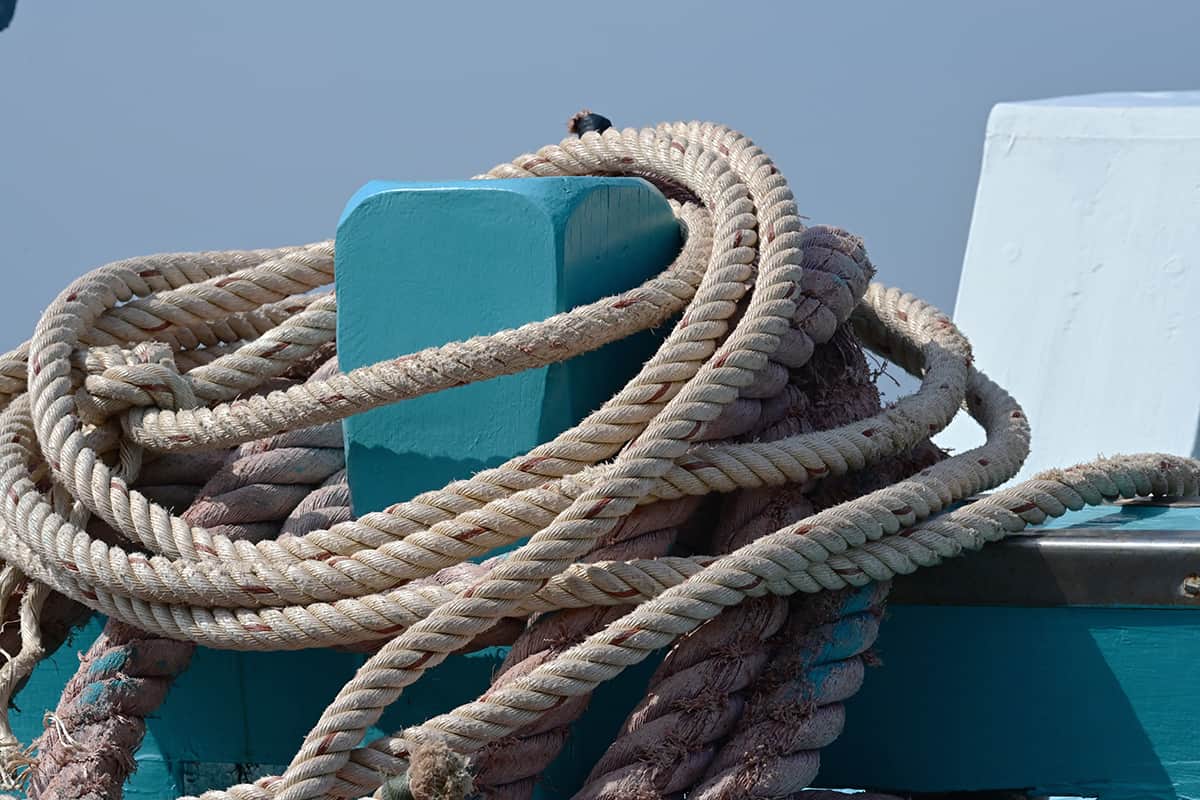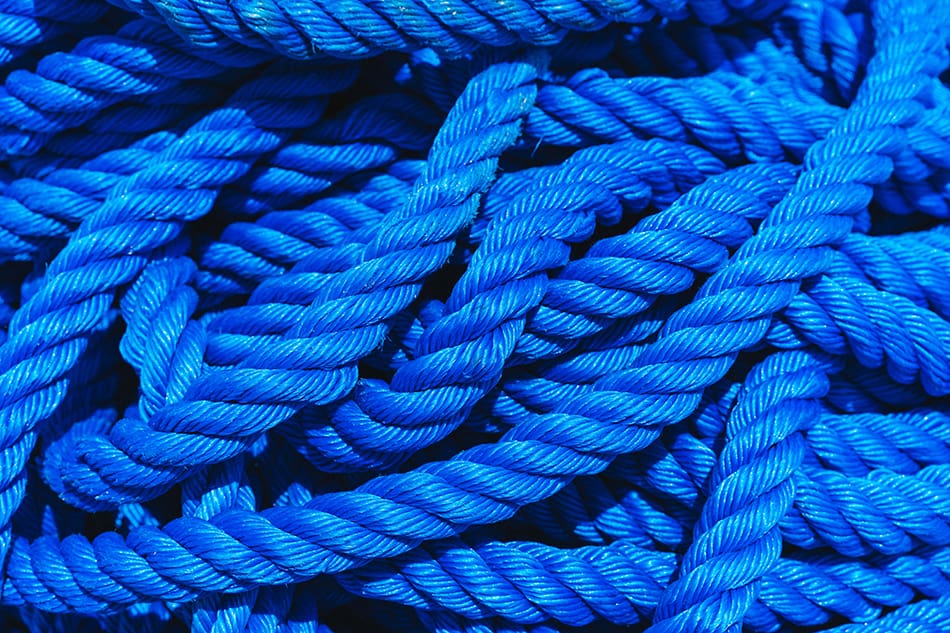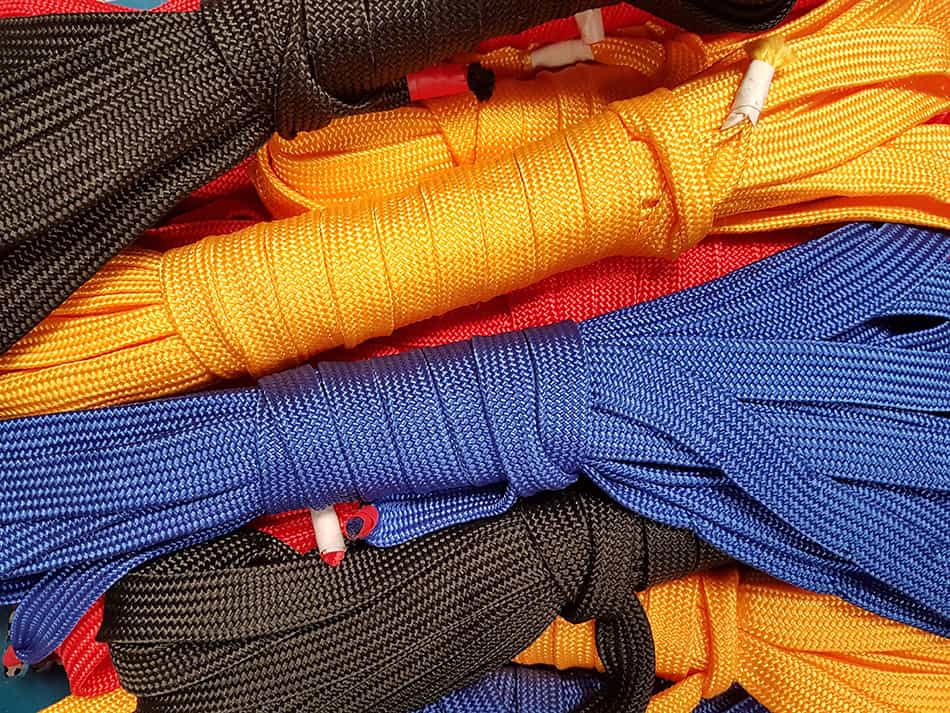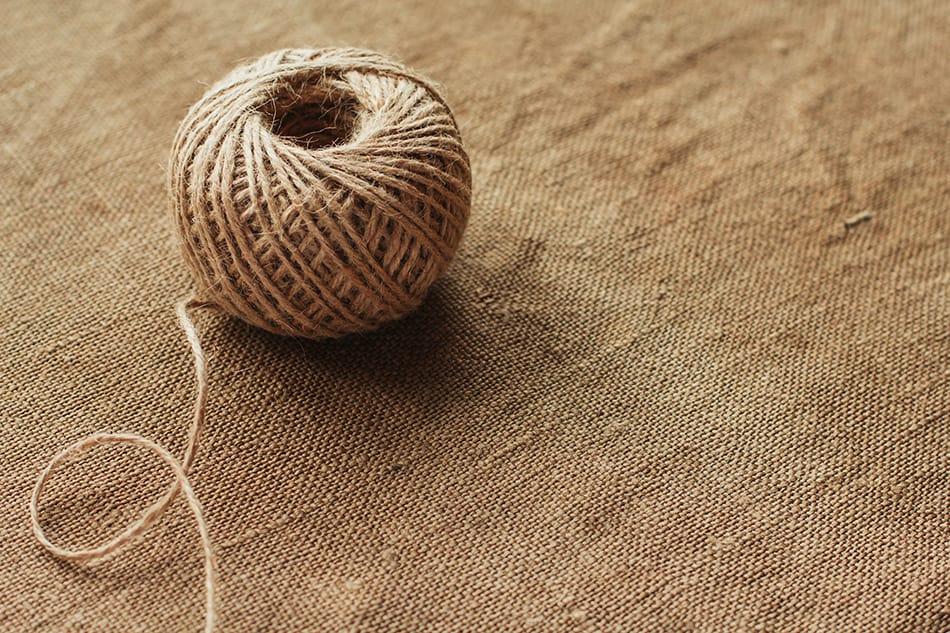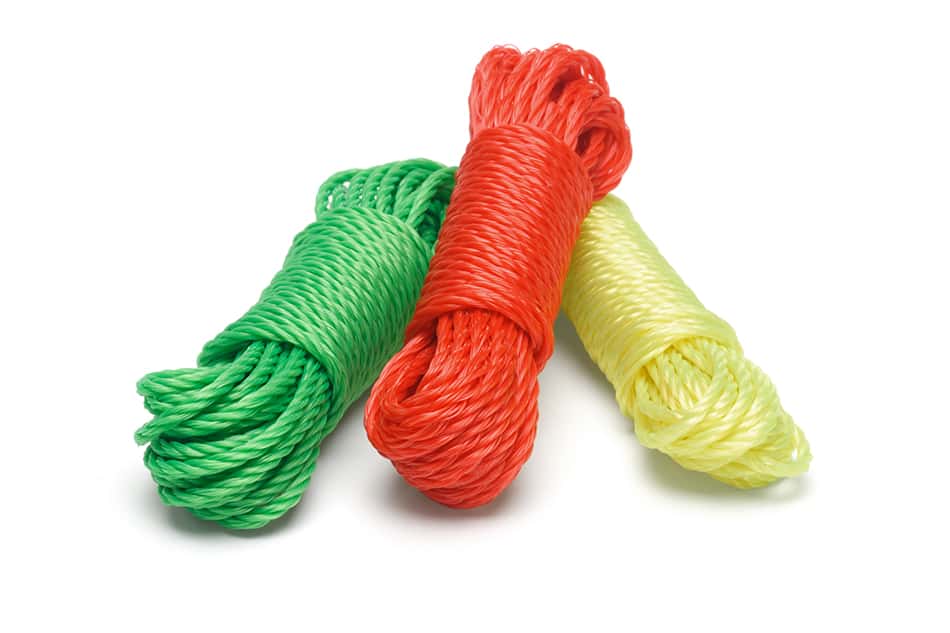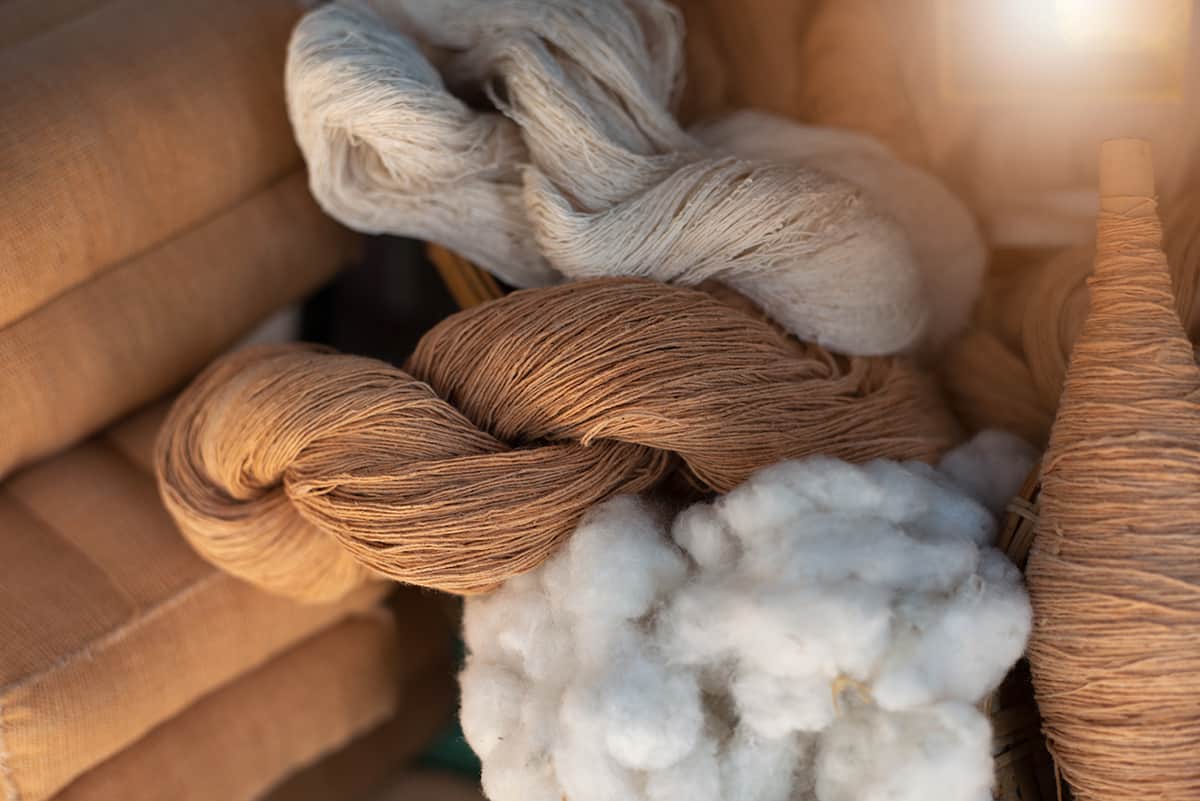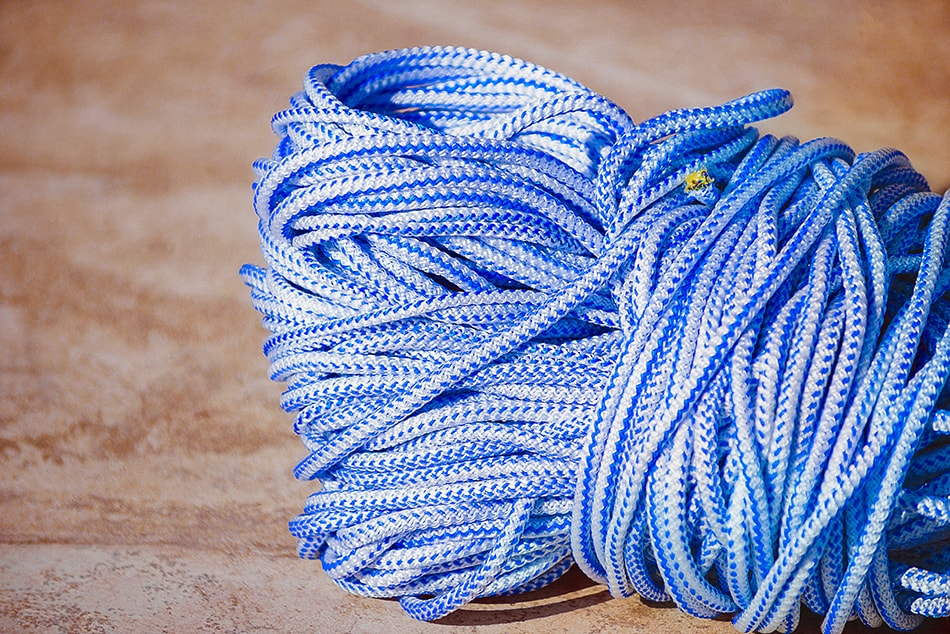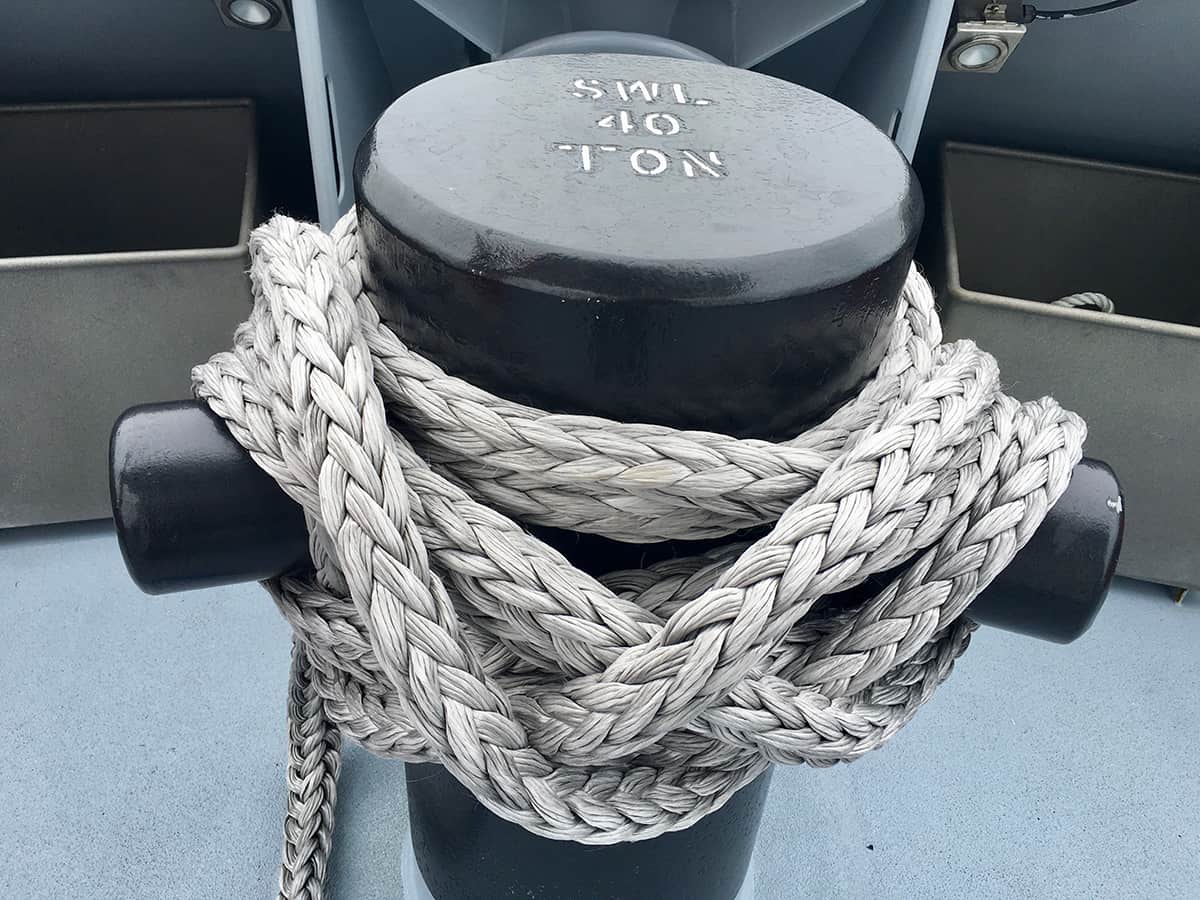When looking at types of ropes, there are three main aspects to take into consideration. These categories are construction, material, and color. Ropes first came to fruition in prehistoric times when they were constructed of long pieces of vine that had been twisted and braided together.
They were used for activities such as hunting, pulling, fastening, attaching, lifting, carrying, and climbing, which is not too dissimilar to what we use various ropes for today!
By the late 1700s, rope makers started to use machines for producing ropes. Materials such as cotton, synthetic, jute were also implemented for manufacturing rope. Nowadays, ropes are utilized for a myriad of purposes in homes and industries.
Uses of Ropes
Every home has something they use ropes for. That’s how important and indispensable they have become to every family. Its versatility and functionality are some reasons why it has become very popular.
Also, there are no effective substitutes for the things you can use a rope for. What makes ropes even more popular among households is that it is cost-effective.
Hanging Items
Ropes can be used as a hanging device that is used to hang things such as plants, pictures, and shelves, or even as a flotation device for your bed. You can use a rope to hang your shelves by having a rope tied around, most importantly, the edges of the shelves, and then connect or attach the rope to your walls so that the shelves can hang. This adds a bit of style to your room, and you can also make the shelves multilayered.
For your pictures, ropes can play a dual role. They can be used for the frame of your pictures and can also be used to hang your pictures. This style is best suited for a home that has country decor but also works well with other stypes of interior decor.
With ropes, you can give your interior a natural feel by using them to hang and hold your plant pot. You can tie the rope together at one end and design the knots any way you like. Ropes can also be used as a flotation device to raise your bed off the floor and suspend it from the ceiling. Make sure you use a very durable rope for raising your bed and ensure the knots tied on each end are very secure.
With a hot glue gun, a tire, cardboard, and rope, you can make your own rope-covered ottoman, stool, or coffee table that would otherwise have come for a costly price from any furniture store.
Make a Rug
You can also use ropes to make your rugs. You can weave a simple rug for your entrance or create one to put in the center of your living room and some other parts of your home. These small rugs are chic and improve the aesthetics of your room.
Make Jewelry
Ropes can also be used to make pieces of jewelry. You can braid, weave or twist your rope and use it to make a necklace, bracelet, and even an earring for yourself. For your jewelry, use only ropes made from a soft material that is gentle on your skin. If you are using the rope for a necklace or bracelet, the rope must be at least an inch longer than your neck or wrist.
You can use beads for the jewelry, or add a gaudy feel to your look by using cowries or use the other more popular materials that are used for pendants.
Make Toys For Pets
For your pets and children, ropes can also be used to create items that can be used for their entertainment. You can use a rope to make a toy for your dog to chew on. By tying two knots at the end of a well-braided smooth rope, you would have created a toy to keep your dog busy.
Do not use a synthetic rope; instead, use a rope made from a soft material. Another very popular use of a rope is as a leash for your dog to use while walking your dog or when you need to tie it down. For cat owners, you can wrap a rope around a stick, cardboard box or particleboard and then use glue to hold it together, thereby creating a scratching post for your cat.
Create Swings
Ropes can also be used to make swings in the backyard of your home for the kids. They can also be used for fitness purposes by using them to make a skipping rope that you and your kids can use for exercise every morning, thereby helping your family remain healthy.
Make a Keyholder
Rather than buying a keyholder, why not make one by yourself? Buy a rope and a keyhole, put the rope into the keyhole, and you can knot the end of the rope to prevent it from falling out and also ensure that you do not lose your key.
Make a Curtain
Ropes are also useful for your curtains. If you do not have a curtain rod, you can improvise with the use of a rope. You can also use ropes as your curtain pullback. There are many ideas to make curtains from ropes, such as this one to make a macrame curtain.
Stair Railing
You can also use ropes as your stair railing as it will add style and elegance to your steps to your stairs. Make sure you use a material that is thick and not coarse but very smooth. This also adds some personality to your stairs.
Outdoor Uses
Ropes can also be used for outdoor purposes such as tying down your tents, hanging up food while camping, to build a hammock, for making nets, and fishing. Also, while on a camping trip, in case of an emergency, a rope can be used to wrap bandages as a first-aid treatment.
Office Uses
Furthermore, ropes can also be used in offices for various purposes. If your business is one that involves dealing with crowds, you can use a rope for proper crowd control. Ropes are used to make barrier stanchions that are used to control crowds in banks, hospitals, airports, theaters, hotels, banquet halls, etc.
This will help manage your customers, prevent unruliness or stampede and also ensure proper social distancing. Ropes are also used for industrial purposes such as mooring on ships, as loops or slings for hauling, installation of industrial components, ascenders for wind power stations, drilling deep holes, tarpaulin systems, hot air balloons, etc.
Types of Ropes
The types of ropes are divided into various categories that make it easier to identify them and help you know what purpose each of them is suited for. These ropes are categorized based on the materials they are made of and the mode of construction, the color of the rope, and the style that is used to make the rope.
Construction
Single Braid Rope
Single braid rope is a type of rope that is used for industrial purposes. This type of role is popular because of its strength and reliability. Single braid ropes do not have a core and consist of strands that are braided in a specific circular pattern. Half of the strands are braided in a clockwise pattern, and the other half is braided in an anti-clockwise pattern.
Single braid ropes are made from high tensile fiber such as Dyneema, and this is why they are so strong and can cope with very heavy equipment such as pulleys, keep an oar stowed on a speed boat, and can also be used for haulage. Most single-braid ropes are made from polypropylene and nylon.
Single braid ropes come in different sizes, such as even 8- plait ropes, 8- strand ropes, and 12- strand ropes. Another name for a single braided rope is a Solid Braided Rope.
Plaited Braid Rope
Unlike the single braid rope, plaited braid ropes are coarser to touch. This type of rope is very flexible, which makes it easy to knot and handle without causing any issues. Contrary to the single braid rope, plaited braid rope has a core, and the various strands that are used to make this type of rope are wrapped around the core.
There are four different strands that are crisscrossed together to form a very flexible rope, and this is also why the rope is coarse. Plaited braid ropes are also called square braid ropes.
A disadvantage of this rope is that its fiber is susceptible to damage because of the way the strands are all wrapped around the core.
Double Braid
A rope within a rope. That’s what the double-braid rope is. It consists of an inner pitted braid as its core and another braided rope wrapped around it. Having a braided core makes this type of rope have high strength and better stability. This makes it easier to balance the load between the core and the outer braided rope.
The external braid protects the core from environmental effects and also ensures that the rope lasts longer. Double braided rope is flexible and easy to splice, and its smoothness makes it easy to handle.
This type of rope doesn’t get damaged easily; however, avoid using it for any activity that will overstretch or damage the cover because it might as well affect the core. And damage to the core cannot be seen from outside. Double braid rope is the best option for marine use.
Hollow
This is a type of rope that has no core, which also means that the center is empty, hence this is the reason why it is called hollow rope. Since it has no core, hollow ropes are easy to splice, and the materials used to make most hollow ropes are common in nylon or polypropylene. A hollow rope is the most suitable type of rope for ski tows and anchor lines.
A hollow rope consists of either 8, 12, or 16 strands. Just like the single braid rope, hollow ropes are braided in a specific circular pattern. One half of the strand is braided clockwise, while the other half is braided anti-clockwise. They are easier to work with, and if you are going to use a hollow rope for your boat or ski, buy a synthetic one.
Diamond Braid
A diamond braid is another easy-to-splice and easy-to-work-with rope. The diamond braid and hollow rope are quite similar, but the major difference is that one has more space while the other is hollow.
Diamond braided ropes are very attractive and more expensive than most other types of ropes because of their construction process. Thanks to the tightly woven braid, diamond braided ropes are strong and very reliable.
Material
Manila
This is a type of rope made from Manila hemp. Manila hemp is not hemp, but a type of fiber obtained from the leaves of abaca which is found mostly in the Philippines, hence the name Manila rope. The Manila rope shrinks whenever it gets wet; instead, after buying the Manila rope, make sure you soak it in water.
This will ensure that the next time it touches water, it shrinks less. The manila rope can also be used for various indoor decorative purposes. It can be used to add a personal style and enhance the decor of your home, it can also be used in banquet halls and to decorate a theater for a performance.
This rope is very sturdy and flexible, and the rope’s material is soft on the hand and gentle on the skin. Although the manila rope is affected by water, it is resistant to salt water. This is one of the reasons why the rope is used for fishing lines and is also used to make fish nets and hawsers.
The manila rope is very functional, and it’s used to make bags, carpets, clothing, furniture, and hangings. As a result of the effect, water has on it, knots made with the manila rope are very hard to untie when wet. Also, after some time of being exposed to saltwater, the manila rope starts to rot.
Pro Manila
The pro manila is the ultimate version of the manila rope. The disadvantages of the manila rope are what the pro manila rope has as its strengths. It doesn’t shrink when immerses in water and is just as durable as the manila rope, and it is smoother and resistant to some chemicals.
The pro manila rope is made of polypropylene, and this is why it lasts longer than the manila rope but is just as functional. The pro manila rope is used for boating and can also be used for a game like tug of war.
Poly Combo
Do you need a rope that won’t be affected by the weather and is useful for various tasks around the house? The poly combo rope fits these criteria and will last for a long time. The construction of the poly combo is unique. It is made from a combination of polyester and polypropylene.
The inner strands are made of polypropylene, while the outer strands are made of polyester. You get the best of both worlds! This is also why it is silky and smooth in hand.
The poly combo rope is very popular because of its versatility. It is very durable and can be used for climbing, making swings in the backyard, as a skipping rope for exercise, and in landscaping.
Polypropylene
Lightweight, durable, cost-effective, great to use around water, dielectric, resistant to oil and chemicals, and lasts for a long time. These are some advantages of a polypropylene rope. The best ropes are made of polypropylene, and this is why it is one of the most popular materials for making ropes. Polypropylene ropes can also be used for decoration as they come in numerous colors, and this is one of the reasons why it is very functional.
However, polypropylene ropes also have some disadvantages. It is susceptible to ultraviolet light, weakens under sunlight, and has low resistance to abrasion. Polypropylene ropes do not return to their original state after they have been stretched out. This type of rope can be used to demarcate your swimming lanes, for electrical work, for docking, exercise, camping, boating, and anchoring.
Polyester
Polyester ropes are perhaps the best quality type of ropes. Contrary to polypropylene rope, polyester ropes can survive in all types of weather, they are resistant to UV lights and abrasion, and unlike polypropylene ropes, they have stretch resistance. Similar to polypropylene ropes, It is very functional, cost-effective, and can be used for numerous purposes.
However, polyester ropes do not float and lose their color if left in water for a long period of time. They can be used for sailing and also for rigging purposes. They are also suitable for industrial and outdoor purposes. If you want a rope for general purposes, a polyester rope is the best option for you.
Jute Rope
This is an environmentally friendly type of rope that is bio-degradable and organic. Jute ropes are coarse and, at first, may seem a little rigid and bulky, but with time, it becomes softer. They are high tensile ropes with a golden and silky shine. The natural shine of a jute rope also makes it suitable for decorative purposes.
Jute ropes have a low thermal conductivity, which means that they are resistant to heat. However, they tend to shrink very fast. Make sure you stretch out the rope when drying it to prevent it from shrinking drastically.
Nylon Rope
Nylon ropes are very durable, flexible, and are very suitable for heavy-duty projects. This type of rope is resistant to wear, rot abrasion, and ultraviolet light and maintains its smooth surface always. Nylon rope can be used with a winch or pulley and for tying down tents and anchors. It can also be utilized for towing and for pulling various heavy equipment.
However, nylon ropes cannot be used for activities that involve water. They tend to sink and lose their strength when wet. Nylon ropes deteriorate when left under high temperatures for a long period of time.
Natural Rope
This type of rope is made from natural fibers such as sisal, cotton, hemp, manila, coir, papyrus, and other plants. They are very durable and are not affected by high heat. Using a natural rope means that you are contributing to keeping the environment healthy because natural ropes are bio-degradable and don’t produce chemical byproducts during the manufacturing process.
However, natural ropes are vulnerable to various damages such as degradation, rotting, mold, ultraviolet rays, and mildew. Keep your natural rope away from water because it wears out quickly, loses its strength, and also shrinks whenever it is wet.
Natural ropes can also be used for decorative purposes in your home, but they are not suitable for outdoor decorations because they will be harder to see.
Synthetic Ropes
Synthetic ropes are one of the most popular types of ropes. Contrary to natural ropes, synthetic ropes are resistant to damage from mildew, ultraviolet rays, mold, and water. Although they don’t shrink when wet, they get damaged when exposed to high heat as they can melt easily.
They are made from various materials, such as polypropylene, polyester, nylon, and high-modulus polyethylene. Synthetic ropes are very sturdy and can be used for activities such as towing and lifting heavy-duty activities.
However, synthetic ropes are not environmentally friendly because they are not bio-degradable and create harmful byproducts during production.
Kevlar Ropes
Of all types of ropes, Kevlar rope is a very strong type of rope that can handle up to 1500 tons. Kevlar ropes are so strong that they are used in the production of bulletproof armor. It is very stable and doesn’t stretch.
They are resistant to flame, rust, water, cut, and chemicals. It is not immune to damage but can withstand a temperature of up to 500 degrees. Kevlar ropes are even stronger than steel pound for pound. This type of rope is very functional as it is suitable for both indoor and outdoor uses.
Kevlar rope is one of the most suitable for industrial use because of its high tensile fiber. It can be used for activities that involve pulling or lifting very heavy equipment or materials. Kevlar ropes are also used for marine duties because they cannot be affected by water.
In conclusion, there are ropes for all types of activities and needs. Some are suited for indoor purposes, while others can be used for both outdoor and indoor usage. You can always refer back to this article as a guide to select the type of rope that is best suited for you.
